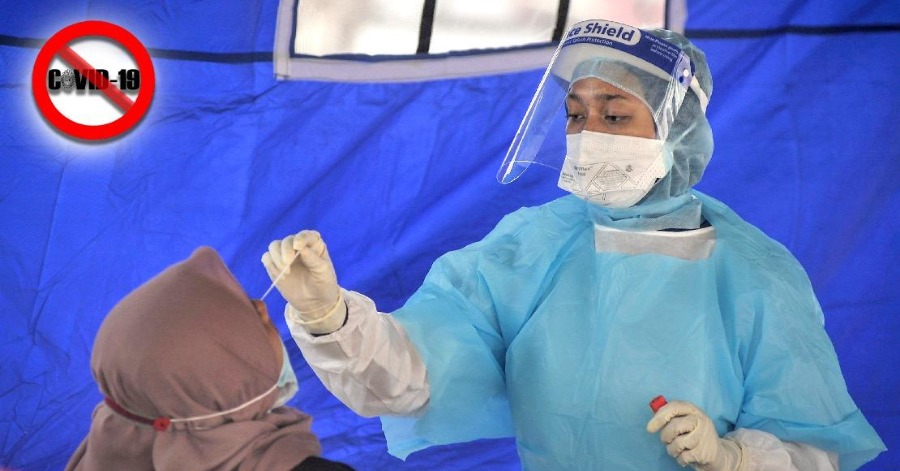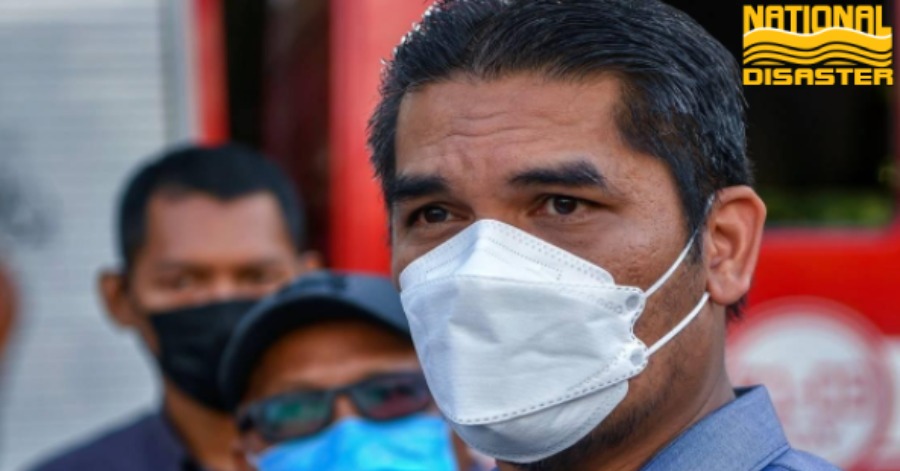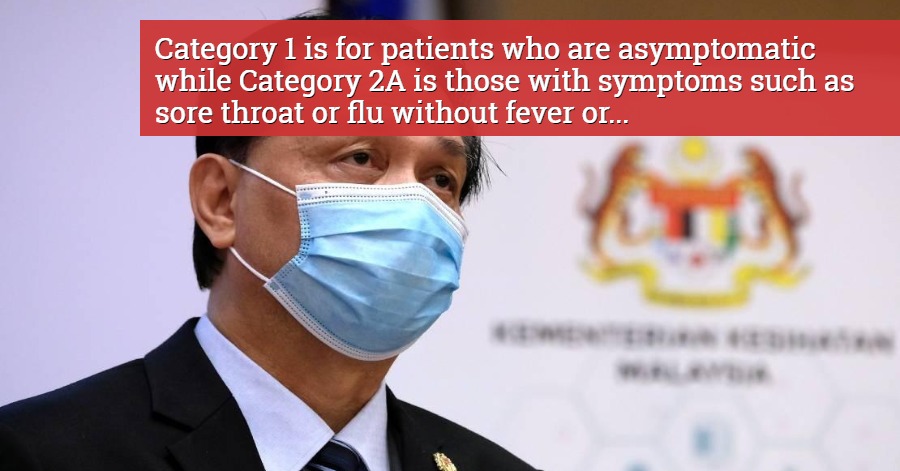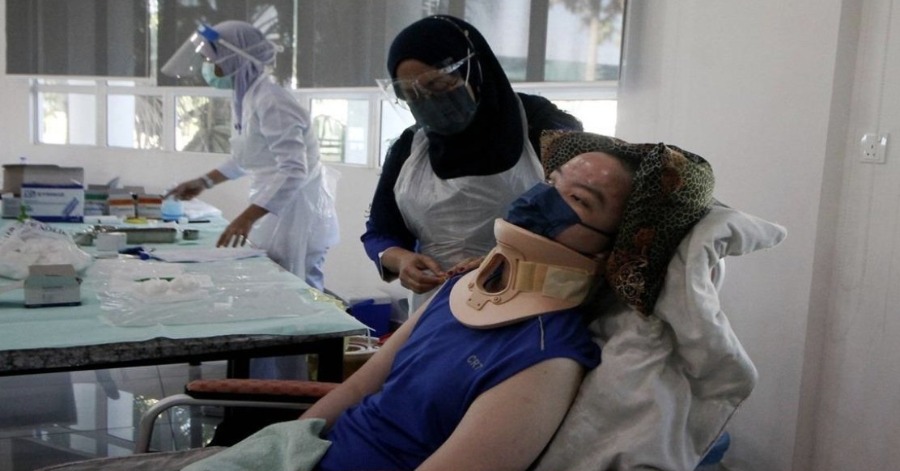KUALA LUMPUR(Bernama) — As the Omicron variant of COVID-19 is slowly raging on across the globe, two new emerging strains ‘IHU’ and ‘Flurona’ could pose new health threat, experts said.
The IHU is nicknamed after the French institution, IHU Mediterranee Infection that reported the B.1.640.2 variant. Scientists at the IHU detected 46 mutations on its spike protein, which is more than Omicron’s 37.
According to international media reports last Tuesday, the person infected with the IHU variant, was fully vaccinated and had just returned from a three-day trip to Cameroon, in central Africa, when he was tested positive. At least 12 cases have been reported near Marseille, south of France, and have been linked to travel to Cameroon.
The World Health Organisation (WHO) was quoted as saying, the variant “has been on our radar” and it was identified around the same time as the highly transmissible Omicron variant was surging in South Africa.
Meanwhile, Israel has confirmed its first case of an individual infected with ‘Flurona’, a term coined to describe the condition of being infected with COVID-19 and the seasonal flu simultaneously.
The infected woman was pregnant and unvaccinated. The Israeli patient is believed to be the world’s first case of Flurona.
OMICRON CASES AND COVID-19 DEVELOPMENTS IN MALAYSIA
Since the first Omicron case was detected in Malaysia involving a foreign student from South Africa who arrived in the country via Singapore on Nov 19, 2021, the Ministry of Health (MOH) continued to detect both imported and locally transmitted cases of the Omicron coronavirus variant.
On Thursday, Health Minister Khairy Jamaluddin announced another 44 positive cases of the Omicron COVID-19 variant have been detected through the whole genome sequencing (WGS) and 7 positive cases of the Omicron variant locally transmitted in Sarawak.
Of the 44 cases, he said, 29 were from Saudi Arabia, 5 from United Arab Emirates, 5 from Bersatu (UAE), 5 Kazakhstan, 3 from United Kingdom (UK), 1 from the United States (US) and 1 from Tanzania.
This brings the cumulative Omicron COVID-19 variant case count in the country to 245, that is, 233 are imported cases and 12 are local infections. Of the 245 cases, 157 (64.08 per cent) are umrah returnees.
Earlier on Jan 4, Khairy announced 58 Omicron COVID-19 variant cases, and of the total, 54 were imported cases and another 4 were local infections. which were reported in Kedah, believed to be infected from a umrah returnee who was positive with the Omicron COVID-19 variant.
From the 54 imported cases, he said, 39 were from Saudi Arabia, seven from UAE, four from UK, two from Nigeria, and one each from Kazakhstan and France.
Meanwhile, Malaysia recorded 3,543 new daily cases as of yesterday, bringing the cumulative figure to 2,776,699.
The breakdown of new daily cases for the week under review (Jan 1 – Jan 6) is as follows:-
Jan 1(3,386),Jan 2(2,882),Jan 3(2,690),Jan 4 (2,842),Jan 5(3,270) andJan 6(3,543).
With the cumulative figure of 2,776,699 cases, Malaysia now ranked 21st in the list of 222 nations/territories struck by the COVID-19 pandemic. Ahead of Malaysia is the Philipppines (2,888,917) and the Netherlands (3,247,900).
Of 3,543 new daily cases announced yesterday, Health Director General Tan Sri Dr Noor Hisham Abullah said only 53 cases (1.5 per cent) were categories 3, 4 and 5 while 3,490 cases (98.5 per cent) were categories 1 and 2.
According to MOH, category 5 is for critical cases requiring ventilators; category 4 is for patients needing oxygen assistance and category 3 is for patients with pneumonia. Category 1 is for patients who are asymptomatic and category 2 is for those with mild symptoms.
Total COVID-10 recoveries as of yesterday stood at 3,484 cases, bringing total recovered cases to 2,705,292 (97.4 per cent).
Of 203 COVID-19 patients warded at the Intensive Care Unit (ICU) yesterday, 86 cases needed respiratory assistance.
Meanwhile, the Ro/rt value stays below 1.00. Below is the Ro/Rt during the week under review: Jan 1 (0.99), Jan 2 (0.99), Jan 3 (0.99), Jan 4 (0.99), Jan 5 ( 0.97) and Jan 6 (0.96).
As of yesterday, Labuan recorded the highest Ro/Rt value (1.10), followed by Sabah (1.05).
The R-Naught or R0/Rt value of a virus indicates the infectivity rate or the number of new infections generated by each case. An R0 value of 0.5 would be needed to flatten this deadly virus’ infection curve.
OTHER DEVELOPMENTS IN THE COUNTRY
Of the total new daily cases of 3,543 reported yesterday, the state-by-state breakdown of new cases (+imported cases) is as follows:-
Three digits – Johor 386 (+24), Kedah 201 (+16), Kelantan 269 (+27), Melaka 158 (+10), Negeri Sembilan 136 (+24), Pahang 245 (+15), Perak 151 (+15), Penang 206 (+16), Sabah 242 (+3), Selangor 809 (+110), Terengganu 138 (+15) and Kuala Lumpur 153 (+76).
Two digits– WP Putrajaya 29 (+9), WP Labuan 20, Sarawak 19 and Perlis 17 (+4).
Meanwhile,total active clusters in Malaysia as of yesterday stood at 190. Overall, 6,150 clusters were detected in the country with 5,960 of them having ended.
According to MOH data, total new clusters during the week stood at 22 and most of the new clusters were linked to the workplace (10, 45.5 per cent) and imported clutsers (5, 22.7 per cent).
There were also 5 imported clusters involving umrah returnees from Saudi Arabia during the week, with the breakdown as follows: –
Jan 3– Rumah Kedai Keratong 5 (Rompin, Pahang) Saudi cluster
Enhanced Movement Control Order – Jan 6 to Jan 19:
Jan 4– Jalan Okk Awang Besar (Labuan) Saudi cluster
Jan 5– Kampung Tok Panjang (Kota Bharu, Kelantan) Saudi cluster
Jan 6– Chiku 01 (Gua Musang, Kelantan) Saudi cluster; and Keratong 2 (Rompin, Pahang) Saudi cluster.
Imported cases:
Jan 1 (346), Jan 2 (333), Jan 3 (300), Jan 4 (332), Jan 5 (252) and Jan 6 (364}.
Active cases with probable infection:-
Jan 1 (41,034), Jan 2 (40,606), Jan 3 (39,733), Jan 4 (39,682), Jan 5 (39,739) and Jan 6 (39,779).
The breakdown of COVID-19 patients based on their respective categories:-
According to MOH, category 5 is for critical cases requiring ventilators; category 4 is for patients needing oxygen assistance and category 3 is for patients with pneumonia. Category 1 is for patients who are asymptomatic and category 2 is for those with mild symptoms.
Of 3,386 new daily cases reported onJan 1; 46 (1.4 per cent) were categories 3, 4 and 5 and; 3,340 (98.6 per cent) were categories 1 and 2.
Of 2,882 daily cases reported onJan 2; 49 (1.7 per cent) were categories 3, 4 and 5; 2,833 (98.3 per cent) were categories 1 and 2.
Of 2,690 daily cases reported on Jan 3; 52 (1.9 per cent) were categories 3, 4 and 5; and 2,638 (98.1 per cent) were categories 1 and 2.
Of 2,842 daily cases reported onJan 4; 47 (1.7 per cent) were categories 3, 4 and 5; 2,795 (98.3 per cent) were categories 1 and 2.
Of 3,270 daily cases reported onJan 5; 69 (2.1 per cent) were categories 3, 4 and 5; and 3,201 (97.9 per cent) were categories 1 and 2.
Of 3,543 daily cases reported onJan 6; 53 (1.5 per cent) were categories 3, 4 and 5; and 3,490 (98.5 per cent) were categories 1 and 2.
Recovered cases during the week under review are as below:-
Jan 1 (3,547), Jan 2 (3,291), Jan 3 (3,535), Jan 4 (2,862), Jan 5 (3,195) and Jan 6 ( 3,484); *cumulative recorded cases as of yesterday stood at 2,705,292 (97.4 per cent).
The daily breakdown in fatalities is as follows:-
*BID = Brought-in-Dead are cases outside the hospital and those brought to the hospital’s forensic department; positive COVID-19 cases after PT PCR tests conducted.
Jan 1– 26 (BID 3),Jan 2– 19 (BID 4),Jan 3– 28 (BID 4),Jan 4– 31 (BID 9),Jan 5– 18 (BID 3) andJan 6 – 19 (BID 4).
*Total fatalities as of yesterday stood at 31,628.
New clusters reported are as below:-
Jan 1– 5 (workplace 4 and education 1);
Jan 2– 1 (education 1);
Jan 3-3 (workplace 2 and imported 1);
Jan 4– 2 (education 1 and imported 1);
Jan 5– 4 (workplace 1, imported 1 and high-risk 2);
Jan 6– 7 ( workplace 3, imported 2, education 1 and high-risk 1).
GLOBAL COVID-19 STATISTICS
According to Worldometer, total COVID-19 cases worldwide stood at 300,808,620 from 287,054,304 previously, with 5,489,719 fatalities as against 5,449,037 the previous week. Recovered cases stood at 257,528,597 from 253,392,501 previously.
Some 222 countries are affected by the COVID-19 pandemic and those in the top 10 of the list are the US, India, Brazil, UK, Russia, France, Turkey, Germany, Spain and Iran.
The breakdown of the top 10 nations (+ new record daily cases) is as follows:-
US 59,466,817 (855,332);
India 35,223,770 (114,484);
Brazil 22,395,322 (44,218);
UK 14,015,065 (179,756);
Russia 10,601,300 (15,316);
France 11,183,238 (261,481);
Turkey 8,787,274 (68,413 );
Germany 7,399,003 (56,787);
Spain 6,922,466 (no data);
Iran 6,203,046 (1,579).
China, where the outbreak was first reported at end-December 2019, remained at the 115th spot with 102,083 cases and 189 new daily cases.
Besides Malaysia,five other Southeast Asian nations have joined the list of 112 countries with more than 100,000 COVID-19 cases. The cumulative breakdown of COVID-19 cases (+new daily cases) is as follows:
Indonesia 14th spot – 4,264,669 (533 cases);
Philippines 20th – 2,888,917 (17,220 cases);
Malaysia 21st – 2,776,699 (3,543 cases);
Thailand 25th – 2,245,250 (5,775 cases);
Vietnam 28th – 1,843,563 (16,472 cases);
Myanmar 67th – 531,624 (192 cases);
Singapore 89th – 283,214 (813 cases);
Cambodia 110th – 120,553 (18 cases);
Laos 112th – 114,787 (no data);
Brunei 168th – 15,532 (no data).
COVID-19 BACKGROUND
The World Health Organisation (WHO)’s China country office was informed of cases of pneumonia that were detected in Wuhan on Dec 31, 2019. On Jan 7, 2020 the Chinese authorities confirmed that the newly detected novel coronavirus can be transmitted from human to human.
Coronaviruses are a large family of viruses that cause illnesses ranging from the common cold to more severe diseases such as Severe Acute Respiratory Syndrome (SARS) and Middle East Respiratory Syndrome (MERS-COV).
A study of the virus’ genetic sequence suggested similarities to that seen in snakes and bats. China health officials identified the Huanan Seafood Market in Wuhan as the source of the transmission of the coronavirus.
On Feb 11, 2020, WHO announced the official name of the virus, COVID-19, which is an acronym for coronavirus 2019 – CO stands for corona, VI for virus and D for disease.
On Jan 30, 2020, WHO declared the coronavirus outbreak as a global emergency and on March 11, COVID-19 was declared a pandemic.
WHO has described the COVID-19 outbreak as much more dangerous than the A H1N1 Influenza, also known as Swine Flu.
Swine Flu, which occurred between January 2009 and August 2010, infected more than 1.6 million people and caused 18,449 fatalities. It was first detected in Mexico and later in the United States in March 2009.
COVID-19 was detected in Malaysia on Jan 25, 2020, when three Chinese citizens, who had entered Malaysia through Johore from Singapore on Jan 23, were tested positive for the disease.
New variants of the COVID-19 coronavirus have since emerged in the United Kingdom (identified as B117) in September 2020, South Africa (501Y.V2) in October 2020 and India (B.1.617), also in October 2020.
Cumulatively, Malaysia’s COVID-19 cases have breached the one million mark as on July 25, with 1,013,438 cases. The first time daily cases reached the five-digit level was on July 13 with 11,079 cases.
WHO on Nov 26 designated a new variant of COVID-19, named Omicron, a variant of concern. It was first detected in Gauteng Province, South Africa.
Sources: BERNAMA









Leave a Comment